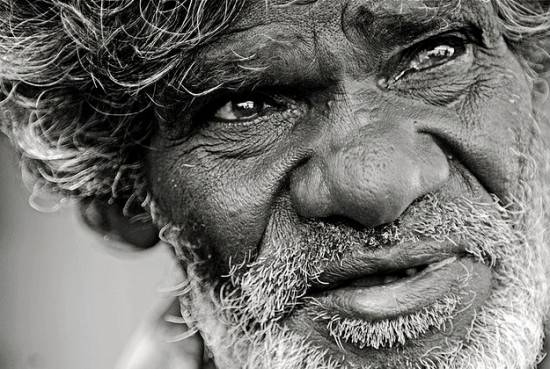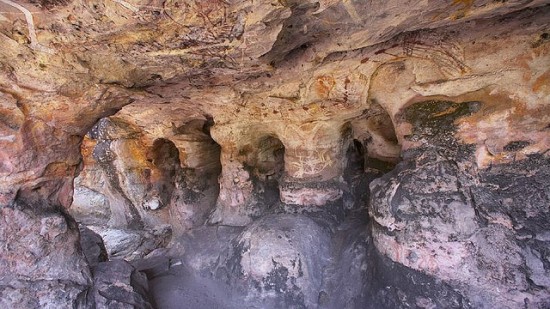Ancient Bloodline
Yothu Yindi is far more than just the name of a famous Aboriginal rock band – its meaning to the Yolngu people of north-east Arnhem Land is linked to a cultural concept which stretches back over 40,000 years to the dawn of their time in the Australian landscape.
Yothu means “child” and Yindi means “big” or “whole”, or when used in the context of defining a baby’s relationship to its mother’s family, “mother”. It’s just a small example of a complicated, intertwining culture in which the clans are divided into two bloodline groups or “moieties” – the Dhuwa and the Yirritja.
People can only marry across the divide ~ if you are a Yirritja man you must marry a Dhuwa woman, if you are a Dhuwa man you must marry a woman from the Yirritja moiety. A child is born into the clan of its father.
This division filters through every aspect of Yolngu life – every person, clan, place, animal, bird, fish, tree, song, language, river, and even the sun and the moon, is either Dhuwa or Yirritja.
The Yolngu believe their world was created long ago by Creator Ancestors who travelled the land before “the first morning”, shaping the landscape, creating the animals, the people, giving them their languages, ceremonies and designs and singing the unique songs which form an integral part of each clan’s law.
There are 40 separate languages spoken in Arnhem Land and in the north-east Miwatj region there are 17 clans living in homeland areas where nearly 100 different dialects are spoken. For some of these people, the first contact with Balanda (Europeans) took place little more than 70 years ago.
It’s a place where ritual circumcision is an integral part of a boy’s growth to manhood and his mother’s brother is a “special uncle” who acts as a role model for life, holding the boy during his circumcision ceremony. Where natural childbirth is still common in the homelands and a newborn infant is bathed in the smoke of an open fire to cleanse its spirit.
Where polygamy and monogamy are both culturally accepted and “payback”, either material or violent, is still a practice in settling disputes between clans. Where pointing the bone and being “sung” by the local equivalent of the “Kadaitja Man” or shaman, still generates fear and dread.
Where a person’s first name is an essential link to their spirit and when they die, as a sign of respect, it is not mentioned or used by anyone else for up to a decade and those with the same name must change it. A clan elder decides when the name can be used again, much to the confusion and frustration of government offices.
The art of north-east and central Arnhem Land is often a fusion of figures with decorative infill and backgrounds. From Elcho Island to Yirrkala, mythological and cultural links are expressed through geometric clan designs in background patterns. These clan “signatures” or Miny’tji depict the law and are sacred. Paintings from these areas are also often divided into panels to isolate segments of the myth being portrayed.
Some of the most important ancestral beings illustrated in the art of these regions are the Wagilag Sisters and the Djankawu, which belong to the Dhuwa moiety clan groups and Barama and Laindjung, who were the instigators of ritual and law for the Yirritja moiety clan groups.
Footnote: Aboriginal culture is often seen as ancient history, but its dynamic nature was made obvious not long after the destruction of Darwin by Cyclone Tracy in 1974. The natural disaster was attributed to the powerful Rainbow Serpent by many Aboriginal groups in the Top End. The Rainbow Serpent is an important ancestral being associated with the Wet Season and they believed it was angry at tribespeople for neglecting their ritual responsibilities.
A year later, Geoffrey Mangalamarra, at Kalumburu in the north-west Kimberley region, dreamt a cyclone dance and song cycle. At nearby Warmun (Turkey Creek), Rover Thomas also dreamt a Cyclone Tracy ceremony called Guirr Guirr, which further helped to revive ceremonial activity in the region.
Buku Larrngay Mulka Centre, at Yirrkala, offers detailed information on Yolngu art, culture and artefacts. A concise overview of Arnhem Land Aboriginal art and cultural background can be seen at the Museum and Art Gallery of the Northern Territory in Darwin. Photographs are not allowed.
Continued from:
Arnhem Land Part 1 – Into A Primal Landscape
Arnhem Land Part 2 – Fishing The Wild Coast
Arnhem Land Part 3 – White Man Dreaming
Photo Credits
Rock Paintings near 7 Spears – Some rights reserved by C Lynn Steele – flickr.com
Roy – No Derivative Works, Some rights reserved by Rusty Stewart – flickr.com
Arnhem Land Rock Art – No Derivative Works, Some rights reserved by Ewen Bell – flickr.com
Arnhem Land Rock Painting – Some rights reserved by flip.01 – flickr.com
Arnhem Land Rock Art Hand Thumbnail – No Derivative Works, Some rights reserved by Ewen Bell – flickr.com






[…] Arnhem Land Part 4 – Ancient Bloodline […]